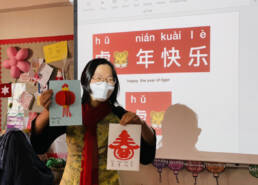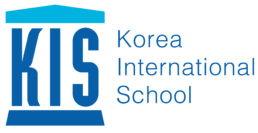World Languages
At KIS Seoul Campus, we consider our world language program to be the crux of one of our KIS Core Values: global citizenship. Multilingual students can more fully participate in their local, national, and global communities by proficiently using multiple languages and demonstrating competency across diverse cultures. Having acquired linguistic proficiency and a deeper cultural understanding, children become more aware of and responsive to the world around them. To this end, students can become empathetic listeners and viewers, understanding and empathizing with how challenging it can be to communicate in new languages. They can more deftly demonstrate insight into the links between culture, language, and communication; having compared their own experiences to the culture of the target language. They can examine subject disciplines from diverse perspectives, having used multiple languages and cultural competencies to research and discuss other learning areas. They have a critical understanding of their own identities and their role in the world, having explored their identities within a new language and culture.
While applying and using their language and cultural skills to invest in our local community, KIS students are equipped to be engaged global citizens. In this way, students of all ages and at all levels of proficiency will use the target language to:
- communicate with speakers/signers of the target language, especially those in their schools and community;
- explore and celebrate the artifacts, practices, and perspectives of multiple cultures;
- compare their own languages and cultures with those of the host community;
- expand their academic knowledge of other disciplines;
- become lifelong learners and enjoy the opportunities that proficiency in multiple languages can offer them; and
- become agents of change that promote equity, global awareness, and multicultural understanding
Korean Language 한국어
KIS Seoul Campus offers two World Language offers for students. All children from PK-Grade 5 learn the Korean language twice weekly. The Korean language curriculum includes specialized classes for non-native speakers of Korean, and classes for heritage-level Korean. The Korean program includes an emphasis on speaking, listening, reading, writing and viewing skills. Students not only learn to speak and become literate in Korean, but they also deepen their awareness and respect for our host country culture. for prototype creation.

Chinese Language 中文
In addition to the Korean language, we also offer Mandarin Chinese once weekly for students in Kindergarten-Grade 5. The Chinese language program focuses on traditional games, songs and stories; as well as Chinese speaking, listening, reading and writing. Students learn to communicate in Chinese and also learn Chinese characters to build up their Chinese literacy skills. The program is built upon a foundation of Total Physical Response (TPR). TPR is a method of teaching language or vocabulary concepts by using physical movement to react to verbal input. The process mimics the way that infants learn their first language, and it reduces student inhibitions, increasing their enthusiasm and involvement in Chinese language learning.

